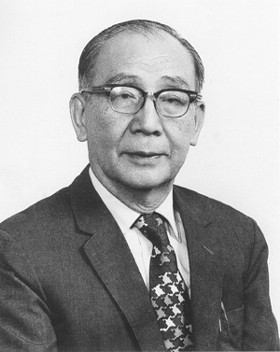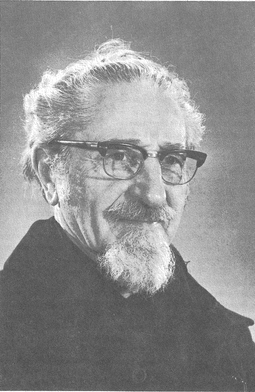External links
- W. South Coblin, The University of Iowa.
W. South Coblin | |||||||||||
|---|---|---|---|---|---|---|---|---|---|---|---|
| Born | February 26, 1944 | ||||||||||
| Alma mater | University of Washington (B.A., Ph.D.) | ||||||||||
| Scientific career | |||||||||||
| Fields | Chinese linguistics, Tibetan linguistics | ||||||||||
| Institutions | University of Iowa | ||||||||||
| Doctoral advisor | Fr. Paul Serruys | ||||||||||
| Other academic advisors | Li Fang-Kuei Jerry Norman | ||||||||||
| Chinese name | |||||||||||
| Chinese | 柯蔚南 | ||||||||||
| |||||||||||
Weldon South Coblin, Jr. (born February 26, 1944) is an American Sinologist, linguist, and educator, best known for his studies of Chinese linguistics and Tibetan.
Coblin attended the University of Washington as an undergraduate student, graduating with a B.A. in Chinese in 1967. He then continued on at Washington as a graduate student under the Belgian Sinologist and Roman Catholic clergyman Fr. Paul Serruys, earning a Ph.D. in Chinese language and literature in 1972 with a dissertation entitled "An Introductory Study of Textual and Linguistic Problems in Erh-ya ". After completing his Ph.D., Coblin stayed at Washington for one year as a teaching associate, then in 1973 joined the faculty of the University of Iowa, where he spent his entire career.
Early in his career he made many important contributions to Tibetan and Sino-Tibetan linguistics, but since the mid-1990s has worked primarily on alphabetic representations of Chinese. Starting around that time along with Jerry Norman he promoted a new direction in Chinese historical phonology making less use of the Qieyun and other rhyme books, and more use of the traditional comparative method. Coblin is an emeritus professor at the University of Iowa.

Sino-Tibetan, also cited as Trans-Himalayan in a few sources, is a family of more than 400 languages, second only to Indo-European in number of native speakers. The vast majority of these are the 1.3 billion native speakers of Sinitic languages. Other Sino-Tibetan languages with large numbers of speakers include Burmese and the Tibetic languages. Other languages of the family are spoken in the Himalayas, the Southeast Asian Massif, and the eastern edge of the Tibetan Plateau. Most of these have small speech communities in remote mountain areas, and as such are poorly documented.

Klas Bernhard Johannes Karlgren was a Swedish sinologist and linguist who pioneered the study of Chinese historical phonology using modern comparative methods. In the early 20th century, Karlgren conducted large surveys of the varieties of Chinese and studied historical information on rhyming in ancient Chinese poetry, then used them to create the first ever complete reconstructions of what are now called Middle Chinese and Old Chinese.

Li Fang-Kuei was a Chinese linguist known for his studies of the varieties of Chinese, his reconstructions of Old Chinese and Proto-Tai, and his documentation of Dene languages in North America.

Roy Andrew Miller was an American linguist best known as the author of several books on Japanese language and linguistics, and for his advocacy of Korean and Japanese as members of the proposed Altaic language family.
Gong Hwang-cherng (1934–2010) was a Taiwanese linguist who specialized in Sino-Tibetan comparative linguistics and the phonetic reconstruction of Tangut and Old Chinese.
Hashimoto Mantarō was a Japanese sinologist and linguist who is best known for advocating research on language geography, linguistic typology, and how different areal features in the varieties of Chinese reflect contact with other language families.
Proto-Tibeto-Burman is the reconstructed ancestor of the Tibeto-Burman languages, that is, the Sino-Tibetan languages, except for Chinese. An initial reconstruction was produced by Paul K. Benedict and since refined by James Matisoff. Several other researchers argue that the Tibeto-Burman languages sans Chinese do not constitute a monophyletic group within Sino-Tibetan, and therefore that Proto-Tibeto-Burman was the same language as Proto-Sino-Tibetan.
Old Mandarin or Early Mandarin was the speech of northern China during the Jurchen-ruled Jin dynasty and the Mongol-led Yuan dynasty. New genres of vernacular literature were based on this language, including verse, drama and story forms, such as the qu and sanqu.

Lower Yangtze Mandarin is one of the most divergent and least mutually-intelligible of the Mandarin languages, as it neighbours the Wu, Hui, and Gan groups of Sinitic languages. It is also known as Jiang–Huai Mandarin, named after the Yangtze (Jiang) and Huai Rivers. Lower Yangtze is distinguished from most other Mandarin varieties by the retention of a final glottal stop in words that ended in a stop consonant in Middle Chinese.
The Nanjing dialect, also known as Nankingese, Nanjingese and Nanjing Mandarin, is the prestige dialect of Mandarin spoken in the urban area of Nanjing, China. It is part of the Jianghuai group of Chinese varieties.
William Hubbard Baxter III is an American linguist specializing in the history of the Chinese language and best known for his work on the reconstruction on Old Chinese.
Scholars have attempted to reconstruct the phonology of Old Chinese from documentary evidence. Although the writing system does not describe sounds directly, shared phonetic components of the most ancient Chinese characters are believed to link words that were pronounced similarly at that time. The oldest surviving Chinese verse, in the Classic of Poetry (Shijing), shows which words rhymed in that period. Scholars have compared these bodies of contemporary evidence with the much later Middle Chinese reading pronunciations listed in the Qieyun rime dictionary published in 601 AD, though this falls short of a phonemic analysis. Supplementary evidence has been drawn from cognates in other Sino-Tibetan languages and in Min Chinese, which split off before the Middle Chinese period, Chinese transcriptions of foreign names, and early borrowings from and by neighbouring languages such as Hmong–Mien, Tai and Tocharian languages.
The Karlgren–Li reconstruction of Middle Chinese was a representation of the sounds of Middle Chinese devised by Bernhard Karlgren and revised by Li Fang-Kuei in 1971, remedying a number of minor defects.

Jerry Lee Norman was an American sinologist and linguist known for his studies of Chinese dialects and historical phonology, particularly on the Min Chinese dialects, and also of the Manchu language. Norman had a large impact on Chinese linguistics, and was largely responsible for the identification of the importance of the Min Chinese dialects in linguistic research into Old Chinese.
Luc Kwanten was a Belgian sinologist, Tangutologist and literary agent.

Mandarin was the common spoken language of administration of the Chinese empire during the Ming and Qing dynasties. It arose as a practical measure, due to the mutual unintelligibility of the varieties of Chinese spoken in different parts of China. Knowledge of this language was thus essential for an official career, but it was never formally defined. The language was a koiné based on Mandarin dialects. The southern variant spoken around Nanjing was prevalent in the late Ming and early Qing eras, but a form based on the Beijing dialect became dominant by the mid-19th century and developed into Standard Chinese in the 20th century. In some 19th-century works, it was called the court dialect.
Although Old Chinese is known from written records beginning around 1200 BC, the logographic script provides much more indirect and partial information about the pronunciation of the language than alphabetic systems used elsewhere. Several authors have produced reconstructions of Old Chinese phonology, beginning with the Swedish sinologist Bernhard Karlgren in the 1940s and continuing to the present day. The method introduced by Karlgren is unique, comparing categories implied by ancient rhyming practice and the structure of Chinese characters with descriptions in medieval rhyme dictionaries, though more recent approaches have also incorporated other kinds of evidence.

Paul Leo-Mary Serruys C.I.C.M. was a Belgian missionary, sinologist, and academic best known for his studies on the grammar of Classical Chinese, oracle bone script, and on the varieties of Chinese. He was a member of the Congregatio Immaculati Cordis Mariae missionary order, and proselyted in China in the 1930s, then later became a professor of Chinese at the University of Washington.
Jackson T.-S. Sun, also known as Jackson Tianshin Sun, is a Taiwanese linguist working on languages of the Sino-Tibetan and Austroasiatic families. He is best known for his pioneering documentation and historical-comparative work in Tani, Rgyalrongic, and Tibetic languages. Sun is a research fellow at Academia Sinica in Taipei, Taiwan.
Nicholas Cleaveland Bodman was an American linguist who made fundamental contributions to the study of historical Chinese phonology and Sino-Tibetan languages.